





LEARNINGHUBTZ.CO.TZSCIENCE STANDARD FIVE EXAM SERIES 126

LEARNINGHUBTZ.CO.TZSCIENCE STANDARD FIVE EXAM SERIES 119
OFFICE OF THE PRESIDENT, REGIONAL ADMINISTRATION AND LOCAL GOVERNMENT
PRIMARY EXAMINATION SERIES
MARCH 2025
STANDARD FIVE SCIENCE
1.
i. Which one of the following characteristics of living things help them to increase in number?
(A) growth
(B) reproduction
(C) stimuli
(D) adaptability
ii. Samwel was asked to collect seed from different plants give to the seeds with one cotyledon .
(A) big seed
(B) dicotyledon
(C) photcotyledon
(D) monocotyledon
iii. Faith was doing experiment to observe very small particles. Which instrument would she use?
(A) mitochondria
(B) periscope
(C) micro-scope
(D) sky scope
iv. The waste from the body organs are called excreta which one of the following waste is released by the skin
(A) sweat
(B) carbon-dioxide
(C) oxygen
(D) urine
v. The movement of plants toward light is called
(A) photosynthesis
(B) anthropology
(C) phototropism
(D) hydropisn
vi. Mushroom is a plant but it does not make its own food. What is the reason
(A) they are to small
(B) they are eaten
(C) they don't have chlorophyll
(D) they can be cooked
vii. The action of living things to move from one place to another is called
(A) irritability
(B) locomotion
(C) diffusion
(D) nutrition
viii. The root type below is likely to come from which of the following plants
(A) pine
(B) beans
(C) groundnut
(D) maize
ix. The fusion of male and female gamete to from a zygote is called
(A)fertilization
(B) reproduction
(C) asexual
(D) mitochondria
x. Which one of the following plants store their food on the stem
(A) potatoes
(B) onion
(C) cabbage
(D) tomatoes
xi. The green coloring matter found on leaves of plants that make them appear green is called
(A) stomata
(B) carbohydrates
(C) chlorophyll
(D) matter
xii. Gaseous exchange on plant take place on leaves. How do we call the small openings that help in gaseous exchange
(A) chlorophyll.
(B) stomata
(C) leaf
(D) petiole
xiii. After fertilization process in sexual animals the fertilized egg is called
(A) gamete
(B) embryo
(C) zygote
(D) pupa
xiv. The period between laying of eggs by animal and hatching period is called
(A) fertilization
(B) incubation
(C) mating
(D) hatching
xv. Adrian was asked by his teacher to state the importance of reproduction. What was his answer
(A) it increases the number of animals
(B) it causes laziness
(C) there will more food
(D) it causes oil erosion
3. Match the items in A to those in B
| LIST A | ANSWER | LIST B |
|
|
|
|
|
|
|
|
|
|
|
|
|
|
|
|
SECTION B:
4. Answer all the questions
i. Tarimo saw an animal with the following characteristics. Lay eggs, body covered with scales, lives in watery which animal was this ………………..
ii. Write down two examples of anthropods
(a)…………………
(b)………………………
iii. Standard five pupils at Patrick school did an experiment to prove that plants produce their own food. Which materials are required for photosynthesis
(a)……………….
(b)………………………..
iv. During mating animals produce gametes. Name
(a) Male gametes………………………………
(b) Female gametes………………………
v. Living things have different characteristics. Which characteristics
(a) Help animal to move……………………….
(b) Make animals increase in number …………………………………………………….
vi. List down any two groups of vertebral animals
(a)…………………………………..
(b) ……………………………………
vii. Which part of the plant
(a) Is site for photosynthesis ………………………………
(b) Absorb water and mineral salt………………………………
viii. Name two parts of the plant where manufactured food during photosynthesis can be stored
(a) ………………………………………………………………………
(b)……………………………………………………………………….
ix. During the day plants reduces gas from the atmosphere and increases Gas x. Which gas is used during photosynthesis process by plant …………………………………………………..
5. Label the plant structure below (10marks)
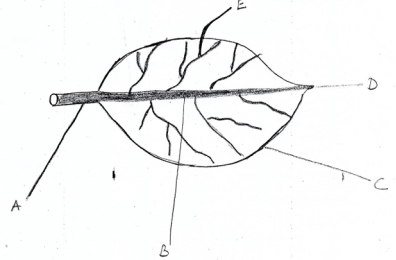
LEARNINGHUBTZ.CO.TZSCIENCE STANDARD FIVE EXAM SERIES 114
PRIMARY EXAMINATION SERIES
COMPETENCE BASED ASSESSMENT
TERMINAL EXAM MAY 2024
SUBJECT : SICENCE &TECHNOLOGY CLASS :5
NAME: ………………………………………………….. DATE: ……….........…
TIME 1:30 HRS
Answer all questions
Choose the letter of the correct answer and write it in the space given
SECTION A:
- The term which stands for surrounding or conditions which include living and non- living things is __________
a) kingdoms b) creatures c) organisms d) environment [ ]
- The branch of science that deal with the grouping and naming of living things is __
a) biology b) taxonomy c) ecology d) taxonomist [ ]
- __________ produce seeds but do not produce flowers [ ]
a) orange trees b) pine trees c) maize plants d) mango tree
- The group of animals with vertrbral column are termed as _________
a) invertebrate animal b) vertebrate animal c) insect d) snail [ ]
- _____ lay eggs in water although they live on land.
a) Tortoises b) Turtlels c) Toads d) crocodile [ ]
- Multicellular organism are made up of ________
a) one cell b) many cell c) atoms d) steels [ ]
- ______ is a basic unity and origin of life of any living organism.
a) nucleus b) energy c) cell d) enzymes [ ]
- Which among of the following terms, refers to the animals whose body temperature varies with the environment temperature?______
a) reptiles b) invertebrates c) cold – blooded d) warm blooded [ ]
- What do we call the kind of animals that do not have backbone?____
a) small animals b) invertebratesc) vertebrates d) insects [ ]
- Which of the following plants characteristics differentiate them from animals: _
a) they produce b) they respond to change in the environment
c) they grow d) they manufacture their own food [ ]
- Is an instrument used to see objects which are obstructed from being see such as objects at the corner.
a) mirror b) microscope c) periscope d) telescope [ ]
- The speed of light is ______
a) 300,000km/h b) 300km/s c)300,000km/s d)3km/s[ ]
- The bending of light when passing through one medium to another is known as ____
a) dispersion b) refraction c) reflection d) defraction [ ]
- The group of light rays traveling in the same direction is called____
a) light b) a beam of light c) straight linesd) spectrum [ ]
- Which of the following is not necessary for seed germination?_
a) water b) soil c) warmth d) oxygen [ ]
- An animal which kills and eats other animals is called ____
a) prey b) omnivores c) predator d) parasite [ ]
- Green plants make their own food through the process called___
a) reproductionb) nutrition c) photosynthesis d) respiration [ ]
- The stage when young ones break the shell and get out of the egg is known as _____
a) incubation b) hatching c) birth d) braking [ ]
- One of the following features is a feature of dicot plants______
a) many roots b) parallel vein c) one cotyledond) tap roots [ ]
- The small opening found on the lower and upper side of leaf are known as ___
a) stomata b) phloem c) chlorophyll d) Lamina [ ]
- Stomata in plant are similar to ____ in fish.
a) spiracles b) gills c) lungs d) book lungs [ ]
- Organisms which have a back bone are called_________
a) mammals b) fish c) vertebrates d) invertebrates [ ]
- Cold – blooded organisms is also called _____
a) lizard b) reptile c) homothermic organism d) poikilothermic organism [ ]
- Which of the following is a member of kingdom monera?______
a) virus b) bacteria c) amoeba d) paramecium [ ]
- When a device is used to simplify work it is said to be_________
a) a machine b) energy c) strong d) complex [ ]
- One of the following is not the source of electricity ___
a) dynamo b) generator c) bulb d) dry cell [ ]
- The process of changing water directly in to vapour is known as ______
a) Sublimation b) melting c) evaporation d) condensation [ ]
- The freezing point of water is _______
a) 1000C b) 00C c) 320 C d) 2120C [ ]
- Plants shed their leaves during dry season in order to ______
a) grow tall b) reduce water loss
c) become fire wood d) to absorb water [ ]
- An animal that feeds on plants is called __________
a) carnivores b) herbivores c) prey d) predator [ ]
- The instrument used to measure resistance is called________
a). Ohms b). Ohmmeter c). Ammeter d). Voltmeter [ ]
- The products of photosynthesis are
a). Starch, oxygen and carbondioxide b) water and carbondioxide [ ]
c) Starch and oxygen d) Temperature, soil and starch
- Which one among the following is the most abundant gas in the atmosphere?_____
a)Oxygen b). rare gases c). Carbon dioxide d). Nitrogen [ ]
- The other name for frozen carbon dioxide is ______
a).Carbon monoxide b). Carbonated gas c). Ice d). Dry ice [ ]
- Which of the following is not a requirement in growth of plants?______
a)Water b). food c). Warmth d). Mineral salts [ ]
- ____________ is the burning of food to produce energy, water and Oxygen
a)Respiration b). Photosythesis c). Reproduction d). Growth [ ]
- What is the other name for frozen carbon dioxide?_______
a).Carbon monoxide b). Carbonated gas c). Ice d). Dry ice [ ]
- An instrument used to measure current is called_______
a).Ammeter b). Amperes c). Ohmmeter d). Voltmeter [ ]
- Which of the following living organism more through crawling [ ]
a) Snail, Earthworm b). Plant and animals c). Human being d). Insect
- If there are 10 volts across a 5 ohm resistor, what is the 10 volts across a 5ohm resistor, what is the current?_________
a).2A b). 3A c). 6A d). 10A [ ]
SECTION:B Fill in the blanks
Observe the figure below then answer the question that follows
![]()
![]()
![]()
![]()
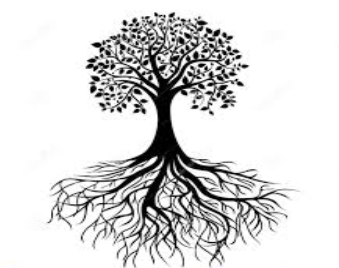
- The part labeled A is called ______________________________________________
- What is the function of part B? ____________________________________________
Observe the food shown in diagram 4 carefully then answer the question that follows.


![]()
![]()
![]()

- The function of the food shown in this above diagram is_______________________
- What is photosynthesis?
__________________________________________________________________________________________________________________________________
45.Monocots seeds store their food in the part called_____________________
LEARNINGHUBTZ.CO.TZSCIENCE STANDARD FIVE EXAM SERIES 98
PRESIDENT’S OFFICE, REGIONAL ADMINISTRATION AND LOCAL GOVERNMENT
PRIMARY EXAMINATION SERIES
NEW FORMAT BASED-STANDARD FIVE EXAMINATION
SUBJECT: SCIENCE AND TECHNOLOGY
MID TERM -1 MARCH 2024
TIME: 1:40HR
Instructions:
- This paper consists of three sections; A, B and C with a total of 8 questions
- All answers must be written in blue or black ink.
- Remember to write your name and other particulars in the given spaces.
- Answer all questions according to the instructions in each section.
- Keep your work neat and smart.
- Cellular phones, tablets and calculators are not allowed in the examination room.
- For each of the items (i)-(x) Write the letter of the correct answer on the spaces provided.
- Which one of the following is not an agent of pollination? (A) sun (B) water (C) wind (D) insects.
- Female gametes are known as (A) pollen grains (B) stamen (C) anters (D) ovules
- One is not a type of fish (A) tilapia (B) catfish (C) turtle (D) sharks
- The part of a plant responsible for absorbing water is (A) stem (B) leaves (C) roots (D) flower
- One is not a characteristic of dicotyledonous plants (A) have broad leaves (B) have parallel venation (C) have tap root (D) seed have two cotyledons
- The following are characteristics of living things except (A) growth (B) excreation (C) reproduction (D) egestion
- Which one of the following is not a part of plant used in asexually reproduction in plants? (A) suckers (B) roots (C) stem (D) runners [ ]
- The part of a flower that receives pollen grains is called (A) style (B) ovule (C) anthers (D) stigma
- ___________________ is the process where living organisms produce new ones of their kind (A) fertilization (B) reproduction (C) pollination (D) digestion
- The port of flower that develops into a fruit is _____________ (A)ovary (B) stigma (C) ovule (D) pollen tube
- Match the function of the part of a leaf in LIST A with corresponding part in LIST B
| LIST A | LIST B |
|
|
QUESTION No.3:
Filling the blanks (5 marks)
- The small openings found on the lower and upper side of a leaf are known as………………..
- The part of a leaf which absorbs sunlight energy is called…………………..
- The products of photosynthesis are and
- The male reproductive cells are called……………..
- Fertilization in mammals occur in a place called…………………..
SECTION B (20 MARKS):
Short answer questions QUESTION No.4: (6 marks)
- Explain the function of sperm duct and the ovary in plants
- Differentiate between self-pollination and cross pollination
- Explain why some plants have brightly colored flowers
QUESTION 5
The diagram below represents a plant organ
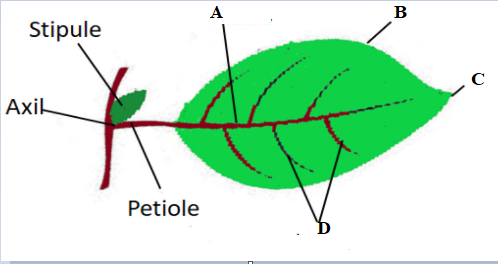
- Name the above organ
- The organ is usually green, explain why
- Name part labelled A, B, C, and D
- What is the function of part labeled D
QUESTION 6
Briefly explain the following
- Explain two human activities which are helpful in soil formation
- How does agriculture change the physical environment
- Animals cannot survive in absence of plants. Explain
QUESTION 7.
i. Which color occurs as a result of the reaction of carbon dioxide gas and lime water?
ii. After the sword was forgotten outside in the morning when we woke up we saw that the sword was rusted. What is corrosion the result of a combination of?
iii. H + O2 →Y. What does the letter Y in this equation represent?
LEARNINGHUBTZ.CO.TZSCIENCE STANDARD FIVE EXAM SERIES 92
OFFICE OF THE PRESIDENT, REGIONAL ADMINISTRATION AND LOCAL GOVERNMENT
PRIMARY EXAMINATION SERIES
ANNUAL EXAMINATION, NOVEMBER-2023
SCIENCE AND TECHNOLOGY
CLASS FIVE
- Juma was driving his ear. What type of mirror must he use to check cars coming from behind _______ (A)Concave (B)Plane mirror (C)convex mirror (D)beauty salon mirror (E)lenses
- Class five were doing an experiment by burning a candle. What kind of change did they experience _______ (A)chemical change (B)physical change (C)light change (D)normal change (E)melting change
- Patrick school went for a study tour in to Tarangire national park. They found that all trees have shade their leaves. This process is called ______ (A)Osmosis (B)Diffusion (C)Transpiration (D)translocation (E)Wilting
- Hamisi was studying science. He came across this symbol. What is it
![]() (A) Dry cell (B)Resistor (C)Bulb (D) switch (E)Battery
(A) Dry cell (B)Resistor (C)Bulb (D) switch (E)Battery
- Why is it advised to shutdown the computer by following the correct procedures? (A)TO avoid losing unsaved information’s (B)To reduce the heat generated within the computer (C)To protect it against computer virus (D)To protect it from un expected power failure (E)To protect it from failing down
- Small particles of iron have entered into eyes a steel rod factory worker and he need help. What would you do in order to help him ________ (A)Use cotton bud to remove the particles (B)use clean cloth to wipe inside the eyes (C)make the person to bend so that the particles fall down (D)use magnet to attract those particles from his eyes (E)washing his face using clean water and soap
- The importance of insects in the environment is ______ (A)Transport flowers (B)pollinate flowers (C)eat flowers (D)development of flowers (E)shedding of leaves
- Social welfare officer visited the elders centre and advised them on the important of eating food rich in ______ (A)proteins (B)Vitamins (C)carbohydrates (D)minerals (E)fatc and oil
- Class five pupils were asked by their science teacher to mention one organ which is found in both respiration and excretory system. Who mentioned the correct organ (A)John Nose (B)Ali kidney (C)Edgar liver (D)Anna Lungs (E)Faith skin
- Sara does not seen well at night which vitamins does she lack? (A)Vitamin C (B)vitamin D (C)Vitamin B (D)Vitamin B2 (E)Vitamin A
- John wanted to push a big stone from his compound as shown below. The part marked A is called. (A)load (B)effort (C)fulcrum (D)lever (E)screw
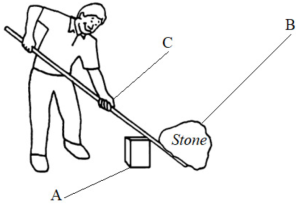
- In which class of lever is the diagram above is in _________ (A)1st class lever (B)2nd class lever (C)3rd class lever (D)4th class lever (E)5th class lever
- Class five pupils were asked to name the characteristic of mammals. Five pupils gave the following answers. Who was incorrect
- James: They have mammary gland and breast feed
- George: Their body is covered by hair
- Patrick: Their take care of their young ones
- Joel: Give birth to young ones alive
- Joshua: They are cold blooded (Poikilothermic)
- Class six did the following experiment
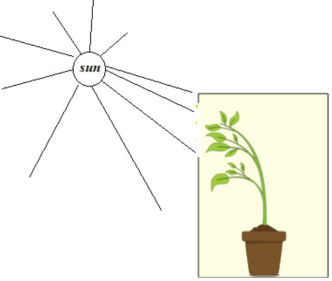
After a few days the plant was growing towards the sunlight. This process is called. (A)Hydrotropism (B) Geotropism (C) Phototropism (D) Chemotropism (E) Photosynthesis
- Desert plants shade off their leaves during dry seasons in order to (A)Absorb more water (B)manufacture its food (C)reduce water loss (D)dry faster (E)get new leaves
- The food that provide the body with energy is ______ (A)protein (B)vitamins (C)minerals salts (D)fats (E)carbohydrates
- The tube that start from the mouth to the anus is called _______ (A)gullet (B)intestine(C)alimentary canal (D)colon (E)trachea
- Frequent urination, excessive urination and frequent thirst are symptoms of _____ diseases. (A)cancer (B)diabetes (C)kwashiorkor (D)anemia (E)whooping cough
- Thin root hairs absorb water and nutrients to the plant though? (A)Osmosis (B)diffusion (C)pollination (D)radiation (E)conduction
- The following are external parts of a leaf
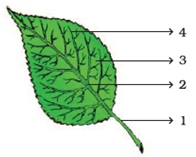
The part marked 1 connects leaf to the stem is called ______ (A)Midrib (B)lamina (C)Apex (D)Petiole (E)vein
- In the above diagram. Which part has the small opening called stomata (A)margin (B)lamina (C)Apex (D)apex (E)petiole
- In human reproduction system fertilization takes place in the _______ (A)Vagina (B)the ovary (C)Fallopian tube (D)Uterus (E)Cervix
- Another name for the uterus is the _______ (A)fallopian tube (B)ovary (C)oviducts (D)womb (E)cervix
- Class five pupils drew the diagram below in their science lesson
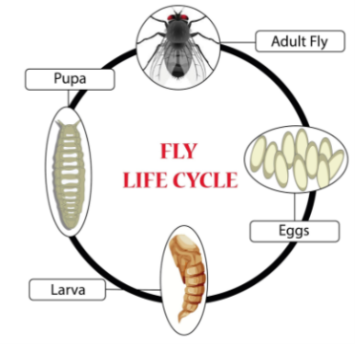
In the diagram above this kind of lifecycle is called ______ (A)complete metamorphosis (B)incomplete metamorphosis (C)lifecycle of butterfly (D)life cycle of housefly (E)lifecycle of cockroach
- A class five pupil listed down characteristics of a certain animal
- They are cold blooded (poikilothermic)
- They have backbone
- They live both on land and in water
- They breathe by means of lungs (adult) and gills (during larvae)
- They lay eggs
This could an __________
(A)snakes (B)Tortoise (C)frogs (D)crocodiles (E)lizards
- Animals that eat plants only are called (A)omnivorous (B)carnivorous (C)Aquatic animals (D)Herbivorous (E)Terrestrial animals
- The kind of most that transmit malaria is called ______ (A)Anopheles (B)Aedes(C)culex (D)culex (D)Elephantiasis (E)Dengue mosquito
- Blood cells that are responsible for defending the body against diseases are called ____ (A)Red blood cells (B)White blood cells (C)plasma (E)Haemoglobin
- The following are agents of pollination except _______ (A)insects (B)wind (C)Birds (D)nectar (E)water
- Rusting is the product of _____ (A)salt, air and water (B)hydrogen and water (C)Iron and water (D)water, silver and air (E)oxygen, water and iron
- In order for a seed to germinate they need _____ (A)sunlight, moisture and air (B)warmth and air (C)moisture, warmth and oxygen (D)air, soil and water €light, moisture and soil
- During a class discussion Juma identified parts of and their function. Which one is correctly matched with its function
- Receptacle – attaches a flower to the plant or branch
- Stomach – attracts insects and birds that pollinate flowers
- Stigma – stores ovules that carry female gametes
- Style – receives pollen from the anther
- Ovary – protects young flowers before they become buds
- The transfer of pollen grains from one plant to another is called (A)self-pollination (B)cross pollination (C)pollen grains (D)anthers (E)water pollination
- An electronic device capable for receiving and collecting information data and handling it is called _______(A)television (B)computer (C)internet (D)phone (E)radio
- What kind of food does its digestion start in the mouth _____(A)vitamin (B)oils (C)carbohydrates (D)proteins (E)minerals
- An organ responsible for removing urea, salts, chemical by-products of medicine and excess water in form of urine is ____ (A)liver (B)heart (C)skin (D)kidney (E)lungs
- Water mixed with sugar and salt is the first aid given to a patients suffering from (A)malaria (B)diarrhea and vomiting (C)typhoid (D)tuberculosis (E)broken arm or leg
- Goiter is a diseases caused by lack of _____ (A)calcium (B)iodine (C)potassium (D)phosphorous (E)iron
- Which of the following exists in three states of matter ______ (A)water (B)iron (C)candle (D)wood (E)wire
- The following electric symbol represent
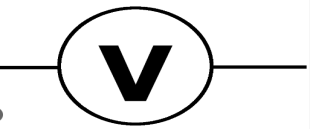
(A) Fuse (B)ohmmeter (C)voltmeter (D)wire (E)Ammeter
SECTION B
- The two ducts from each kidney, which transport urine from the kidneys to the urinary bladder is called ________
- The walls of the outer part of thermos flask are made up of glass so as to reduce heat loss by _______
- Class five set up the following experiment
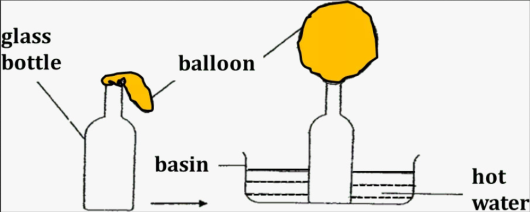
The experiment shows _______________
- The two types of machines are _________
- A wheelbarrow is a simple machine in _____________ class lever
LEARNINGHUBTZ.CO.TZSCIENCE STANDARD FIVE EXAM SERIES 85
OFFICE OF THE PRESIDENT
REGIONAL ADMINISTRATION AND LOCAL GOVERNMENT
PRIMARY EXAMINATION SERIES
MID TERM TWO EXAMINATIONS-AUG-2023
SCIENCE AND TECHNOLOGY CLASS 5
NAME................................................................................... DATE......................
- One of the following is an input device of a computer
- Printer
- Mouse
- Monitor
- Speaker
- One functions of counseling centre is to protect people against
- Drug abuse
- Family life
- Education
- Games and sports
- _______ is the process by which food is broken down into finer particles for ready to be swallowed in the stomach
- Digestion
- Photosynthesis
- Growth
- Ingestion
- _______ is the process by which plants make their own food
- Photosynthesis
- Transpiration
- Respiration
- Irritation
- _________ is a basic unit of life of any living organism
- Unicellular
- Chloroplast
- Cell
- Plasmodium
- Living things that feed their young one with milk are called
- Reptiles
- Amphibians
- Birds
- Mammals
- The process of losing water through the stomata of leaves in plants is known as
- Osmosis
- Transportation
- Chlorophyll
- Evaporation
- The study of how living things and non living thing interact each other is called
- Habitat
- Ecology
- Environment
- Ecosystem
- Which one among of the following is a source of light
- Flowers
- Laughing
- The sun
- In the morning
- A child to a parent and seed to a plant is like
- A cell
- A living animal
- An off spring
- A soon
- The animals that eat both plants and fresh is called
- Herbivores
- Omnivorous
- Predictor
- Carnivorous
- The natural place where living organism grow and reproduce in
- Growth
- Housing
- Habitat
- Reproduction
- The animals that hunted and killed for food are called
- Preys
- Predators
- Herbivorous
- Fresh meat
- Unwanted materials in our body are called
- Sweating water
- Excess water
- Waste products
- Nutrients
- Kangaroos are good examples of animals who
- Walking
- Climb
- Jumping
- Running
- Plants use minerals and water from the
- Stem
- Soil
- Sunlight
- Atmosphere
- According to the environment the body temperatures of 37C is for
- Birds
- Sick
- Human kind
- All organisms
- Co2 represents
- Oxygen
- Hydrogen
- Nitrogen
- Carbon dioxide
- What do we call the kind of animals that do not have backbone
- Insects
- Small animals
- Cerebrate
- Invertebrate
- The types of air needed by plants to make food is
- Oxygen
- Hydrogen
- Vapour
- Carbon dioxide
- The instrument used to observe objects at the corner is called
- Microscope
- Periscope
- Telescope
- Microfiber
- Loss of water through the stomata of the leaves is called
- Osmosis
- Transparency
- Photosynthesis
- Transpiration
- Water cycle is also known as
- Run off
- Hydrological
- Transpiration
- Hydrological
- Seasons
- Which device is used by the laboratory to view small organisms like plasmodium in laboratory
- Microscope
- Glass
- Prism
- Periscope
- The combination of water, oxygen and Y result to result to rust. What does the missing unknown Y stand for
- Calcium
- Hydrogen
- Iron
- Non-metal
- HIV/AIDS is a disease that has no cure. The virus of aids attack which types of blood cells
- Red blood cell
- White blood cell
- Hemoglobin
- Platelet
- The only flying mammals are called
- Kangaroos
- Whale
- Bat
- Rat
- Fish use _______ to breath
- Spiracle
- Skin
- Mouth
- Skin
- Gills
- What do we call reflected sound __________
- Echo
- Rainbow
- Energy
- Heat
- What do we call the air in motion
- Humidity
- Tectonic
- Wind
- Carbon dioxide
SECTION B
WRITE True for the correct statement and False for the wrong one
- The starting point of digestion is stomach ________
- Animals breathe in carbon dioxide ___________
- There are three main states of matter __________
- A bat feeds its young one with mammary glands _______
- One of the guidance and counseling centre in Tanzania is ANGAZA __________
- One of the property of light is “it travel through the straight line” ________
- When water kept at the temperature 0°C change into vapour _______
- Horn is example of sound message used by drivers when driving on road _______
- Anything that surrounds human being is known as environment _____
- The sense organ that detect sound is skin ___________
SECTION C: 2MARKS@
- What do you understand by the term “leaf wilting” _____________________
- Give two properties of the image formed by the plane mirror
- ________________________
- ________________________
- The plane mirrors are used to produce a multiple image. When an object is placed ______ two plane mirror the _______ of one image to the other image cause the formation of multiple images
- Give two advantages of the adaptation of living things to their environment
- __________________
- __________________
- Mention any two parts of female reproductive system
- _________________________
- _________________________
LEARNINGHUBTZ.CO.TZSCIENCE STANDARD FIVE EXAM SERIES 80
OFFICE OF THE PRESIDENT
REGIONAL ADMINISTRATION AND LOCAL GOVERNMENT
PRIMARY SCHOOL EXAMINATION SERIES
SCIENCE AND TECHNOLOGY STANDARD FIVE
TIME: 2 HOURS
INSTRUCTIONS
- This paper has four printed pages, forty five (45) questions with sections A and B
- Answer all the questions in all sections
- Fill all the required information in the OMR form and the page with question number
41 – 45 on the back page of the OMR form
- Write your Examination Number and then shade the digits of the number in the respective place on your answer sheer
- Shade the letter of the correct answer for each question in the answer sheet provided (OMR) for questions number 1 – 40. For example, if the correct answer is A shade as follows:
| (A) | (B) | (C) | (D) | (E) |
- If you have to change your answer, you must-rub out the shading very neatly before shading the new one. Use a clean rubber.
- Use HB pencil only for questions 1 – 40, and a blue or black ink ball pointed pen for questions number 41 – 45.
SECTION A.
For questions 1-40 choose the correct answer from the alternative given and write the answer of correct option on the space provided.
- Which of the following is not a characteristic of amphibian?
- They lay eggs
- They are cold blooded
- They live both in land and water
- They are warm blooded
- The following are gaseous exchange structures for amphibians, except;
- Lungs
- Skin
- Mouth
- Gills
- Which of the following is not a reptile?
- Fish
- Lizard
- Crocodile
- Turtle.
- The largest bird in the world is;
- Kiwi
- Emu
- Ostrich
- Dove.
- Which of the following is not a mammal?
- Shark
- Whale
- Bat
- Cow
- An example of a mammal without sweat glands is;
- Bat
- Whale
- Dog
- Rat.
- Animals with constant body temperature are called;
- Dycoteledon
- Poikilotherms
- Homeoitherms
- Monocotiledones
- An example of a plant that produce seeds without fertilization is;
- Oranges
- Maize
- Mangoes
- Pineaples.
- The role of chrolophyl in a plant leave is to;
- Trap sunlight
- Make food
- Make plant green
- Convert light into energy
- The part of a leave with large number of palisade cells is the;
- Spongy mesophyll
- Cuticle
- Epidermis
- Upper epidermis
- Which of the following is not a raw material for photosynthesis?
- Water
- Air
- Sunlight
- Oxygen.
- Which of the following plants does not store food on the roots?
- Cassava
- Sweet potatoes
- Carrots
- Yams
- Water and mineral salts are transported up to the leaves in a plant in the;
- Phloem
- Xylem
- Stem
- Veins
- Male gametes in a flower are produced in the;
- Stigma
- Stamen
- Anthers
- Pistil
- Transfer of pollen grains from anthers to the stigma of the same plant is called?
- Pollination
- Self-pollination
- Cross pollination
- Fertilization
- Neema observed a plant which had flowers with dull flowers, long filament and many pollen grains. The plant is likely to be pollinated by;
- Birds
- Insects
- Wind
- Water.
- After fertilization of a flower, which part becomes a fruit?
- Petal
- Ovary
- Ovules
- Stamen
- Male reproductive cells in mammals are produced from which part of reproductive system?
- Penis
- Vas deferens
- Testis
- Scrotum
- In females, where does fertilization take place?
- Cervix
- Ovary
- Oviduct
- Vagina
- Which of the following insects has four stages of growth?
- Grasshopper
- Butterfly
- Cockroach
- Frog.
- The most destructive stage to a farmer in the life cycle of a butterfly is;
- Egg
- Larva
- Pupa
- Caterpillar
- The primary source of energy on the earth is the;
- Water
- Moon
- Sun
- Plants
- The process responsible for rain formation includes;
- Evaporation and condensation
- Boiling and freezing
- Evaporation and cooling
- Cooling and freezing
- The study of the relationship between living organisms and the environment is called?
- Biology
- Ecology
- Agriculture
- Balance of nature
- Keeping many animals in a small piece of land can lead to the following;
- Improvement of ecology
- Destruction of ecology
- Clearing bushes and making area attractive
- Get food easily.
- Plants which grow in an area with a lot of water are likely to be having the following features;
- Thin leaves
- Deep roots
- Succulent stems
- Thorns
- Why do plant shed their leaves during the dry season?
- To look beautiful
- To prevent loss of water
- To improve air circulation
- To make it easier for fruits to form
- Which of the following features does not assist to prevent water loss?
- Curling of leaves
- Shedding of leaves
- Thorny leaves
- Large leaves.
- The ability of Chameleon to change its color in order to escape from danger is called?
- Adaptation
- Irritability
- Camouflage
- Modification.
- The bending of light when it passes from one medium to another is called
- Refraction
- Reflection
- Echo
- Image.
- The flow of current is measured using an instrument called?
- Ammeter
- Ommeter
- Galvanometer
- Voltameter.
- The current in a circuit is measured using a;
- Ommeter
- Dry cell
- Voltameter
- Ammeter.
- Two types of circuits are;
- Series and resistance
- Parallel and current flow
- Series and parallel
- Parallel and direct.
- The three main requirements for plants to live are ……………….
- Water, oxygen and fertilizer
- Water, air and fertilizer
- Water, air and sun-light
- Soil, air and fertilizer
- All the following are forms of energy, except …….
- Wind
- Light
- Soil
- Electricity
- Electrical energy is created by the movement of electrical charges called…..
- Atoms
- Cells
- Echo
- Electrons
- An instrument used to measure the volume of liquids such as water is called ……..
- A thermometer
- A measuring cylinder
- A barometer
- A hygrometer
- Heat travels in solids by a process called ……………
- Conduction
- Convection
- Radiation
- Transparent
- Which of the following accidents and disasters are caused by natural forces?
- Heavy rains, electric shocks and cyclones
- Thunderstorms, cyclones and heavy rains.
- Electric shocks and road accidents
- Heavy rains, floods and road accidents
- Malaria is an infectious disease caused by a germ called. …..
- Female anopheles mosquito
- Male anopheles mosquito
- Plasmodium
- Culex mosquito
SECTION B.
ANSWER QUESTION 41-45 BRIEFLY.
- Mtiririko wa umeme katika sakiti huitwa…………………………., ili mtiririko huo utokee ni lazima sakiti ya umeme iwe…………….
- Shaba ni ……………………kizuri cha umeme na plastiki ni ………………cha umeme
- Taja kifaa kinachotumiwa kupima kani ya msukumo wa umeme….
- Kizio cha mkondo wa umeme ni………………………………….
- Kifaa kinachotumiwa kupima ukinzani kinaitwaje?........................
LEARNINGHUBTZ.CO.TZSCIENCE STANDARD FIVE EXAM SERIES 70
OFFICE OF THE PRESIDENT
REGIONAL GOVERNMENT AND LOCAL GOVERNMENT
STANDARD FIVE EXAMINATION SERIES
SCIENCE & TECHNOLOGY
ANNUAL FOR 2022
ANSWER ALL QUESTIONS
SECTION A
Choose the correct answer and write its letter in the space provided.
- Despite building muscles what else do sports strengthen?
- The legs
- Body joints
- Head joints
- The hands
- The joints of the upper parts of the body
- Which group among the following provides first aid training and the service itself?
- The Red Cross
- Angaza
- The Fire Brigade
- Good Samaritans
- Traffic police
- The food which provides the body with all nutrients in the rights proportion is:
- A meal with proteins;
- A meal with protein and carbohydrates;
- A balanced diet;
- Well cooked food;
- Food which smells well.
- Mama Katu entered the house and found her husband down after electric short. How will she help him?
- To give him clean drinking water
- To give him milk
- To shake him
- To fan him a cool breeze
- To give him a shower
- Air is a combination of;
- Oxygen
- Carbohydrates
- Gases
- Vapour
- Water and oxygen
- Water in the form of vapour in the atmosphere is called:
- Clouds
- Rain
- Ice
- Fog
- Humidity
- One of the following ways prevents soil erosion.
- Cutting down trees;
- To burn forests;
- To plant trees;
- Cutting down grass;
- To increase the number of livestock
- What circumstance can cause ôpositive effectö in environments?
- Fishing using poison
- Digging holes on hills
- Cutting down trees carelessly near water sources
- Fishing using explosives
- To plant trees
- The following are the necessary characteristics for a living organism. Which do you think is not correct?
- Respiration
- Growth
- Manufacturing food
- Movement
- Reproduction
- The part of a seed which stores food for the growing plant is.
- A cotyledon
- A peel
- An embryo
- A foetus
- A bud
- The part of a flower which attracts insects that will help in pollination and dispersal of pollen is
- Petal
- Sepal
- Stigma
- Fruit stem
- Pistils
- A scientist allowed gas to pass through a certain liquid and its colour turned milky. Which liquid was that and what the gas?
- Lime water ľ oxygen
- Orange water ľ carbon dioxide
- Lime water ľ nitrogen
- Lime water ľ carbon dioxide
- Milk ľ oxygen
- The act of enquiring about phenomena or events by self-questioning is known as:
- Astrology
- Curiosity
- Education
- Understanding
- Being responsible
- In writing a report of a laboratory experiment the fourth point to be written is:
- Method
- Instruments
- Results
- The aim
- Conclusion
- Fruits drop down from the trees. This proves that there is a force of
- Lifting
- Dragging
- Gravity
- Pressure
- Opposition
- Digested food is absorbed by ůů.. which are in the small intestine
- Caesium
- Pancreas
- Villi
- Throat
- Viruses
- The following living organism is said to be the leading contributor of environmental destruction.
- Trees
- A cow
- A human being
- A crow
- An elephant
- How can you help a person who has fainted?
- To provide him with fresh air
- To shake him vigorously
- To lay him on the stomach
- To press him slowly on the stomach
- To put a cold, wet piece of cloth on his face.
- Which First Aid is supposed to be given to a patient who has diarrhoea?
- To take him to the doctor quickly
- To give him pain killers
- To give him a solution of lemon, sugar and salt
- To take him to the witch doctor
- To give him enough food
- The ůůdisplays the file name of the workbook that is being used and the name of the application software you are using.
- Ruler bar
- Menu bar
- Title bar
- Scroll bar
- Review tab
- What kind of gas do green plants reduce from the sky during the day?
- Carbon dioxide
- Nitrogen
- Hydrogen
- Oxygen
- Nitrate
- It is advised that a place to build a pit latrine should be
- In a valley near the river;
- Inside the living house;
- A bit far from the house where we live;
- At a very flat area
- Very close to the residential house
- The part of a flower which receives pollen is called
- Style
- Stigma
- Ovary
- Stamen
- Ovule
- In which substances among the following does heat travel by conduction?
- Water and iron;
- Iron and aluminium;
- Aluminium and vapour;
- Air and water;
- Air and iron
- Among the following which one is a simple machine?
- A bicycle
- A motorbike
- A winch
- Lever
- A motor car
- Scientific research beings with:
- Questions
- Investigation
- Hypothesis
- Query
- Data
- The report of a science experiment is supposed to flow in the following sequence
- Purpose, costs, opinion and suggestions,
- Purpose, apparatus, methodology, results and conclusion;
- Purpose, methodology, results and conclusion
- Purpose, apparatus, opinion and suggestions
- Purpose, the experiment itself and suggestions
- The following are web service providers that are used to create email accounts, except ____
- Yahoo
- Hotmail
- Microsoft
- Lack of iron nutrients in the body causes;
- Loss of weight;
- Having an old face;
- Weak bones;
- Blood to lose its red colour;
- Loss of appetite
- A solution of sugar and water is a necessary first aid to a victim of;
- Malaria and headache
- Diarrhoea and vomiting
- Backbone and typhoid fever
- T.B and influenza
- Fracture
- Which of the diseases below is not sexually transmitted?
- AIDS
- Trichomonas
- Syphilis
- Chlamydia
- Trachoma
- Which of the following statements is False?
- A laptop has an internal system unit.
- A laptop has an external system unit
- The speaker is one of the computer output devices.
- The monitor is part of the hardware of the computer
- Computers can help people carry out money transactions.
- The following activities destroy water sources except
- Cutting
- Burning forests
- Grazing a lot of livestocks around water sources
- Disposing chemical wastes in the water sources
- Fetching cooking water from water sources
- It is most suitable to construct a pit latrine on a high ground because:
- It is easier to erect a wall
- Smell from the toilet will be far from the ground level
- It is difficult for it to wear out
- Ground water will be far from the level of the latrine
- The latrine will not be filled up in a short time
- A class of living things/organisms which can live on land and in water is known as
- Amphibians
- Anthropods
- Fish
- Aves/birds
- Mammals
- The plant illustrated below grows in
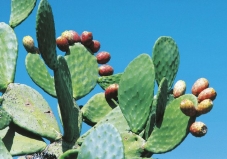
- Dense forests
- Water
- In long grasses
- Deserts
- Mountains
- Why do some plants shed their leaves during winter?
- To retain their water
- To facilitate transpiration
- To store food
- To conserve the soil
- To nourish the soil
- The source of electricity in a dry cell is ůů energy.
- Solar
- Mechanical
- Sound
- Magnetic
- Chemical
- The following are tab menus found on the menu bar in Excel program, except ů..
- File tab
- Home tab
- Insert tab
- Cut and paste tab
- Page layout tab
- The following are precautions to take for long term safe keeping of the television, except
- Keeping the television in a safe and dry environment
- Switching off the television when not in use
- Covering the television to protect it from dust
- Keeping the television in an area with enough air circulation.
- Keeping the television near fire to keep it warm.
SECTION B
In questions 41 ľ 45, write the correct answer in the space provided.
- (i)The type of change that results to the formation of a new substance is called ůů..
(ii)In human growth, at which developmental stage is counselling needed most?
- (i)Which vitamins are we advised to eat in order to avoid scurvy (bleeding gums)?
(ii)Songeanene School was found to have students suffering from marasmus. This problem is cause by lack of ůů
- (i)The communication devices shown in the diagrams below are examples of ůů.. communication equipment
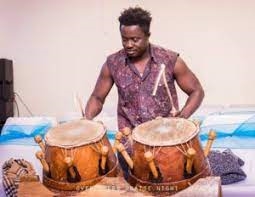
(ii) Study the diagram below carefully and answer the questions that follow
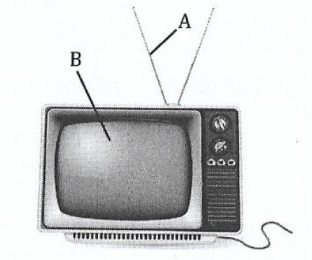
- The communication devices above is called a ůůů..
- Name the parts marked
- ůůůůůůů
- ůůůůůů..
- (i)When you open Excel for the first time, the original name of the file that appears before you change it is ůůůů
(ii)The antennas mostly used in Tanzania for normal digital television transmission are......
- (i)A change of matter that does not lead to change in mass is known as
(ii) Kwashiorkor is a malnutrition disorder caused by
LEARNINGHUBTZ.CO.TZSCIENCE STANDARD FIVE EXAM SERIES 64
UNITED REPUBLIC OF TANZANIA
PRESIDENT’ S OFFICE
REGIONAL ADMINISTRATIONS AND LOCAL GOVERNMENT
MID TERM I EXAMINATIONS
SCIENCE AND TECHNOLOGY
STANDARD FIVE
Time1:30 Hours
Pupil’s Name............................................................
Instructions
- This paper consists of section A and B with total of forty five questions
- Answer all questions in each section
- For questions 1-40 put your choice in the box provided
- For question 41-45 write your answer by filling the spaces provided
- All communication devices and any unauthorized materials are not allowed in the examination room
SECTION A
Choose the most correct answer and write in the box provided.
1.Human body are made up with various organs. In reproductive system the work of uterus is. (a)Stone food (b)to join ovary and fallopian tube (c)to keep zygote (d) to store water for zygote (e)to serve food for zygote
2.What kind of food which digestion starts in the mount .............
(a)Protein (b) vitamin (c)carbohydrate (d)salt (e)minerals
3.The north pole and south pole end of magnet being pulled together what will happen .....
(a) they will repel (b) will attracts (c) they produce sound (d) produce electricity (e)they will show direction
4.Wich of the following is not sexual transmitted diseases.........
(a)Syphilis (b) Chlamydia (c) gonorrhea (d) HIV AIDS (e) asthma
5.Which organ of theses convert red blood cells into bile pigment
(a)Live (b) kidney(c)hearts (d) lungs (e) pancreases
6.Mr.Chakubanga want to open saloon In his village for her son. Which type of mirror Mr. Chakubanga will be advance to use in his saloon. (a) convex mirror (b)concave mirror (c) Plane mirror (d) car driving mirror (e) both plane mirror and car mirror
7.Which gases used by leguminous plant to produce protein (a)carbon dioxide (b)oxygen (c) Nitrogen (d) helium (e) carbon monoxide.
8. Heat from tge fire reaches our bodies through the process called ......
(a)Conduction (b) convection (c) series (d) radiation (e) paralledl
9.What part of reproductive system is involved in fertilization ...........
(a)uterus (b) ovary (c)vagina (d)fallopian tube (e) ovum
10.If the angle made by incident ray on the plane mirror is 30° what will be value of reflection angle in degree (a)90° (b) 60° (c)30°(d)45°(e) 180°
11. Mrs. Chausiku is suffering from HIV/AIDS for a long time. How did you call the diseases Mrs Chausiku suffering from (a) eruption diseases (b)pandemic disease (c) epidemic disease (d)heredities disease.
12.In correcting vision problem especially myopia and hyper myopia. Which lens can be used in correcting long sightedness. (a)cornered lens (b) convex lens (c)convex mirror (d)plane mirror
13.Anong the different characteristic of trees are growing and dying . Why do trees shade their leaves during the dry season. This helps them to (a) simplify process of photosynthesis (b)grow quickly (c)equal distribution of water and mineral salt (d) easily got sunlight (e) prevent water loose.
14.When person became ill or has an accident they should get first aid before being taken to Hospital. The following are the importance of first aid except? (a) to solve life (b) making money (c) reduce pains (d)to prevent death (e) reduce damage.
15.Machine is anything that simplifies work. When you are pushing the wheel barrow the fulcrum is (a)where your hands hold hands (b) at the centre of the wheel (c)where your feet´s are on the ground (d) at your elbow joint
16.What part of the tree is responsible for trapping sunlight during the process of photosynthesis
(a) stem (b)chlorophyll (c) roots (d) xylem (e) phloem
17.It is important to adhere good agriculture practise to protect the soil. Which of the following will help in soil conservation. (a)cultivating along the river bank (b) cutting down trees (c) Burying plastic in the soil (d) mono – cropping (e)crop rotation.
18. When giving first aid to the burnt victim avoid the following (a) Apply water to the wound
(b) apply medicine to the wound (c) apply honey to the wound (d) Covering the wound with warm clean doth.
19.Seeds that are disperse by animal have characteristic of (a)having books (b)being light (c)having hard converting (d)being heavy (e)being easily carried
20.Plant use gas to make its own food. Which gas does plant reduce at night?
(a)Oxygen (b)carbon dioxide (c) rare gases (d) nitrogen.
21.IRON + C + Oxygen =Rust, C stand for .........
(a)Water (b)salt (c)carbon dioxide (d)sugar (e)oxygen
22.In what way can the magnetic field be destroyed (a) by leaving the magnet hanging East – West (b)by leaving the magnet hanging North – South (c)Storing the magnet when pole are different sees (d) painting and oiling (e) by putting in water
23.Animals vary in the habitat they live, some live on land some live in water. Group of animals that live on land and water are called. (a)Amphibian (b) anthropoid (c) fish (f) birds (e) mammals
24.The kidney filtered waste is transported to the urine bladder through a tube called?
(a) bronchioles (b) Urethra (c) ureter (d) fallopian (e)tube.
25.Which of the following flower part connect the stigma to the ovary
(a)insects (b) petal(c) sepal(d) style (e) tube
26.Food digested in the small intestine and distributed to the body in the help of .....
(a) Water (b) oxygen (c)food (d) absorption (e) system
27.Trachoma is a is a communicable disease which is spreas from one person to another through
(a) Air (b) contaminate food) (c) housefly (d) water (e)contact
28.When a salt water fish is put into fresh water the following will happen (a) water will move out of the body of fist through the skin (b) water will move into the body of fish trough the skin (c) salt will move out of the body of fish through the skin (d)salt will move into the body of fish through the skin.
29.The waste product remove from the body cell is called
(a) excretory (b)excretion (c)excreta (d) Urine (e) stool
30.After fertilization of the egg, the fetus undergoes various stage development. What are the gestation period of human being is.... weeks (a) 40 (b) 19 (c) 36 (d) 9
31.The following are the simple machine except
(a)pulley (b)pair of scissor (c)wheel barrow(d)computer
32.The main end product of photosynthesis are (a)water, oxygen and starch (b) water, carbon dioxide and carbohydrate (c) oxygen, carbon dioxide and protein(d)carbon dioxide and heart
33.The following are the forms of energy except (a) light (b) air (c) sound (d) heat (e) nuclear
34.The changes of temperature and pressure cause matter to change from one state to another.
The change of substance which result to the formation of new substance is called
(a)Physical change (b)kinetic change (c)lateral change (d)Chemical change (e)sun
35.Animals are divided into different groups according to their characteristics. The crowing animals are found on which group of animals (a) Birds(b)amphibian (c)reptile (d)mammals(e)fish
36.The transfer of pollen grain from anther to the stigma of the different flower is called (a)Pollination (b)self pollination (c) cross pollination (d)pollution(e)second
37.The blood which mixed with impurities are supplied to the kidney by (a)ureter (b) urethra (c) renal vein (d) renal artery (e) pulmonary artery
38.Energy from the sun reaches our bodies through
(a)Ovule (b)pollen grain (c)anther (d)filament (e)stamen
40.When the fulcrum is between the load and effort this is which class of lever ...
(a)Second (b)third (c)first (d)pair of scissor (e)fourth
SECTION B; ANSWER THE FOLLOWING QUESTION.
41. Name four requirement for a plant to make its own food trough a process of photosynthesis
- ....................................................................
- .....................................................................
- .....................................................................
- .....................................................................
42.Why does the rule appear bent party dipped into water
......................................................................................................................................................................................................................................................................................................................................................................................................................................................................................................................................................................................................................................................................
43.Give three signs of a child with kwashiokor
44. Why the handles of cooking pans are made up of plastic wood.
.........................................................................................................................................................................................................................................................................................................................................................................................................................................................................................................................................................................................................................................................................................................................................................................................................................................
45. Draw an electric symbol for battery and ammeter
..............................................................................................................................................................................................................................................................................................................................................................................................................................................................................................................................................................................................................................
1
LEARNINGHUBTZ.CO.TZSCIENCE STANDARD FIVE EXAM SERIES 54
UNITED REPUBLIC OF TANZANIA
PRESIDENT’ S OFFICE
REGIONAL ADMINISTRATIONS AND LOCAL GOVERNMENT
MID TERM I EXAMINATIONS
SCIENCE AND TECHNOLOGY
STANDARD FIVE
Time1:30 Hours
Pupil’s Name............................................................
Instructions
- This paper consists of section A and B with total of forty five questions
- Answer all questions in each section
- For questions 1-40 put your choice in the box provided
- For question 41-45 write your answer by filling the spaces provided
- All communication devices and any unauthorized materials are not allowed in the examination room
SECTION A
Choose the most correct answer and write in the box provided.
1.Human body are made up with various organs. In reproductive system the work of uterus is. (a)Stone food (b)to join ovary and fallopian tube (c)to keep zygote (d) to store water for zygote (e)to serve food for zygote
2.What kind of food which digestion starts in the mount .............
(a)Protein (b) vitamin (c)carbohydrate (d)salt (e)minerals
3.The north pole and south pole end of magnet being pulled together what will happen .....
(a) they will repel (b) will attracts (c) they produce sound (d) produce electricity (e)they will show direction
4.Wich of the following is not sexual transmitted diseases.........
(a)Syphilis (b) Chlamydia (c) gonorrhea (d) HIV AIDS (e) asthma
5.Which organ of theses convert red blood cells into bile pigment
(a)Live (b) kidney(c)hearts (d) lungs (e) pancreases
6.Mr.Chakubanga want to open saloon In his village for her son. Which type of mirror Mr. Chakubanga will be advance to use in his saloon. (a) convex mirror (b)concave mirror (c) Plane mirror (d) car driving mirror (e) both plane mirror and car mirror
7.Which gases used by leguminous plant to produce protein (a)carbon dioxide (b)oxygen (c) Nitrogen (d) helium (e) carbon monoxide.
8. Heat from tge fire reaches our bodies through the process called ......
(a)Conduction (b) convection (c) series (d) radiation (e) paralledl
9.What part of reproductive system is involved in fertilization ...........
(a)uterus (b) ovary (c)vagina (d)fallopian tube (e) ovum
10.If the angle made by incident ray on the plane mirror is 30° what will be value of reflection angle in degree (a)90° (b) 60° (c)30°(d)45°(e) 180°
11. Mrs. Chausiku is suffering from HIV/AIDS for a long time. How did you call the diseases Mrs Chausiku suffering from (a) eruption diseases (b)pandemic disease (c) epidemic disease (d)heredities disease.
12.In correcting vision problem especially myopia and hyper myopia. Which lens can be used in correcting long sightedness. (a)cornered lens (b) convex lens (c)convex mirror (d)plane mirror
13.Anong the different characteristic of trees are growing and dying . Why do trees shade their leaves during the dry season. This helps them to (a) simplify process of photosynthesis (b)grow quickly (c)equal distribution of water and mineral salt (d) easily got sunlight (e) prevent water loose.
14.When person became ill or has an accident they should get first aid before being taken to Hospital. The following are the importance of first aid except? (a) to solve life (b) making money (c) reduce pains (d)to prevent death (e) reduce damage.
15.Machine is anything that simplifies work. When you are pushing the wheel barrow the fulcrum is (a)where your hands hold hands (b) at the centre of the wheel (c)where your feet´s are on the ground (d) at your elbow joint
16.What part of the tree is responsible for trapping sunlight during the process of photosynthesis
(a) stem (b)chlorophyll (c) roots (d) xylem (e) phloem
17.It is important to adhere good agriculture practise to protect the soil. Which of the following will help in soil conservation. (a)cultivating along the river bank (b) cutting down trees (c) Burying plastic in the soil (d) mono – cropping (e)crop rotation.
18. When giving first aid to the burnt victim avoid the following (a) Apply water to the wound
(b) apply medicine to the wound (c) apply honey to the wound (d) Covering the wound with warm clean doth.
19.Seeds that are disperse by animal have characteristic of (a)having books (b)being light (c)having hard converting (d)being heavy (e)being easily carried
20.Plant use gas to make its own food. Which gas does plant reduce at night?
(a)Oxygen (b)carbon dioxide (c) rare gases (d) nitrogen.
21.IRON + C + Oxygen =Rust, C stand for .........
(a)Water (b)salt (c)carbon dioxide (d)sugar (e)oxygen
22.In what way can the magnetic field be destroyed (a) by leaving the magnet hanging East – West (b)by leaving the magnet hanging North – South (c)Storing the magnet when pole are different sees (d) painting and oiling (e) by putting in water
23.Animals vary in the habitat they live, some live on land some live in water. Group of animals that live on land and water are called. (a)Amphibian (b) anthropoid (c) fish (f) birds (e) mammals
24.The kidney filtered waste is transported to the urine bladder through a tube called?
(a) bronchioles (b) Urethra (c) ureter (d) fallopian (e)tube.
25.Which of the following flower part connect the stigma to the ovary
(a)insects (b) petal(c) sepal(d) style (e) tube
26.Food digested in the small intestine and distributed to the body in the help of .....
(a) Water (b) oxygen (c)food (d) absorption (e) system
27.Trachoma is a is a communicable disease which is spreas from one person to another through
(a) Air (b) contaminate food) (c) housefly (d) water (e)contact
28.When a salt water fish is put into fresh water the following will happen (a) water will move out of the body of fist through the skin (b) water will move into the body of fish trough the skin (c) salt will move out of the body of fish through the skin (d)salt will move into the body of fish through the skin.
29.The waste product remove from the body cell is called
(a) excretory (b)excretion (c)excreta (d) Urine (e) stool
30.After fertilization of the egg, the fetus undergoes various stage development. What are the gestation period of human being is.... weeks (a) 40 (b) 19 (c) 36 (d) 9
31.The following are the simple machine except
(a)pulley (b)pair of scissor (c)wheel barrow(d)computer
32.The main end product of photosynthesis are (a)water, oxygen and starch (b) water, carbon dioxide and carbohydrate (c) oxygen, carbon dioxide and protein(d)carbon dioxide and heart
33.The following are the forms of energy except (a) light (b) air (c) sound (d) heat (e) nuclear
34.The changes of temperature and pressure cause matter to change from one state to another.
The change of substance which result to the formation of new substance is called
(a)Physical change (b)kinetic change (c)lateral change (d)Chemical change (e)sun
35.Animals are divided into different groups according to their characteristics. The crowing animals are found on which group of animals (a) Birds(b)amphibian (c)reptile (d)mammals(e)fish
36.The transfer of pollen grain from anther to the stigma of the different flower is called (a)Pollination (b)self pollination (c) cross pollination (d)pollution(e)second
37.The blood which mixed with impurities are supplied to the kidney by (a)ureter (b) urethra (c) renal vein (d) renal artery (e) pulmonary artery
38.Energy from the sun reaches our bodies through
(a)Ovule (b)pollen grain (c)anther (d)filament (e)stamen
40.When the fulcrum is between the load and effort this is which class of lever ...
(a)Second (b)third (c)first (d)pair of scissor (e)fourth
SECTION B; ANSWER THE FOLLOWING QUESTION.
41. Name four requirement for a plant to make its own food trough a process of photosynthesis
- ....................................................................
- .....................................................................
- .....................................................................
- .....................................................................
42.Why does the rule appear bent party dipped into water
......................................................................................................................................................................................................................................................................................................................................................................................................................................................................................................................................................................................................................................................................
43.Write two benefits of using biogas as a source of energy
44. Why the handles of cooking pans are made up of plastic wood.
.........................................................................................................................................................................................................................................................................................................................................................................................................................................................................................................................................................................................................................................................................................................................................................................................................................................
45. Name two types of pollination
..............................................................................................................................................................................................................................................................................................................................................................................................................................................................................................................................................................................................................................
1
LEARNINGHUBTZ.CO.TZSCIENCE STANDARD FIVE EXAM SERIES 49
MINISTRY OF EDUCATION, REGIONAL ADMINISTRATION AND LOCAL GOVERNMENT
STANDARD FIVE EXAMINATION SERIES
SCIENCE AND TECHNOLOGY, MID TERM SEPTEMBER 2021
ANSWER ALL QUESTIONS
Choose the correct answer
- The vein that carries oxygenated blood is known as
- Aorta
- Pulmonary artery
- Pulmonary vein
- Venacava
- Which one of the following is not a blood vessel?
- Aorta
- Ventricles
- Capillaries
- Venacava
- One of the most important function of the blood is to
- Dissolve oxygen
- Carry food and oxygen to all parts of the body
- Keep us warm
- Dissolve food
- Hemoglobin is important because
- It carries oxygen in the body
- Fight diseases
- Digest food
- Generate heat
- Digestion is the process by which
- People make food
- People eat food
- Food is broken down in simple substance that can be absorbed
- Substances are transported in the body
- In the mouth food is mixed with saliva which has enzymes that break down
- Carbohydrates
- Vitamins
- Proteins
- Fats
- Function of hydrochloric acid in the stomach is
- To digest starch
- To kill germs
- To slow digestion
- To destroy food
- Which of the following groups of food give the body the ability to fight diseases
- Green vegetables, fruits and mineral salts
- Fish, egg, milk and ugali
- Fish, milk and eggs
- Milk, meat and rice
- H.I.V. as a virus when it gets into the body it attacks which kind of cells
- Bone marrows
- Red blood cells
- White blood cells
- Plasma
- The group of animals that feed on the flesh or meat of other animals is called
- Omnivorous
- Carnivores
- Herbivorous
- Insectivores plants
- Which one of the following is not a first aid given to the victim of burns caused by flames
- Remove the victim from the source of danger
- Comfort the victim
- Run the burns with cold water
- Give the victim very hot drinks immediately
- Which one of the diseases given below is caused by lack of iron in the diet
- Marasmus
- Measles
- Polio
- Anaemia
- The following are reasons for giving first aid to a victim which one is not
- To stop bleeding
- To save life and reduce pain
- To stop further injuries
- To stop breathing
- One of the following machine is operated by electricity
- Manual break
- Trolley
- Scissors
- Computer
- Which process facilitates the movement of water molecules from the soil to the root hairs of the plants?
- Capillarity
- Osmosis
- Oxygen
- Diffusion
- Which one among the following is not a chemical change?
- Rusting
- Dissolving salt
- Fermenting milk
- Burning a piece of paper
- The following are items required when washing clothes except?
- Wood ash
- Clean water
- Soap
- Clothes
- Which among the following gases is a rare gas?
- Nitrogen
- Carbon dioxide
- Oxygen
- Argon
- Pick out from the following why oxygen is most important to animals
- It support combustion
- It is used in rusting
- It is used in welding
- They breath it in
- Which of the following is not a part of circuit?
- Cell
- Wire
- Switch
- insulator
- Which gas is used in fire extinguishers?
- Oxygen
- Carbon dioxide
- Nitrogen
- Hydrogen
- The instrument used to measure body temperature is
- Wind vane
- Stethoscope
- Thermostat
- Thermometer
- IRON + C + OXYGEN = RUST, C stands for
- Water
- Salt
- Carbon dioxide
- Sugar
- The following are requirements for seed germination
- Water and air
- Moon light
- Mineral salts
- Warmth only
- The following animals belong to reptiles except
- Chameleon
- Tortoise
- Toad
- Snake
- During a science study, a certain animal was breast feeding, warm blooded and its body was covered by hair. This animal was likely to be a
- Bird
- Crocodile
- Fish
- Mammal
- The only flying mammal is
- Ostrich
- Bat
- Eagle
- Hen
- The process by which plants lose water to the atmosphere through leaves is called
- Respiration
- Phototropism
- Transpiration
- Expiration
- The tiny openings in plant’s leaves that allows passage of gases is called
- Stomata
- Chloroplasts
- Nucleus
- Cell wall
- Organisms that are able to manufacture their own food are called
- Heterotrophs
- Saprophytes
- Insects
- Autotrophs
SECTION B
Look at the diagram of a computer and name its parts
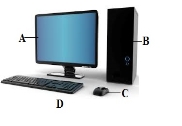
| A | B | C | D |
- A standard five did the following experiments on law of magnets. Explain what happened to the two magnets

- What is the boiling point of water
- In which class lever does a claw hammer belong
- The process for changing steam or water vapour directly into ice is called
- Give one example of a physical change
- Which method can be used to separate a mixture of rice and iron fillings
- The diagram below shows which method of heat transfer

- State any on common nutritional deficiency diseases
- Name any one sexually transmitted disease
- Heat from the sun reach the earth by a process called
- Name one simple machine found in the first class lever
LEARNINGHUBTZ.CO.TZSCIENCE STANDARD FIVE EXAM SERIES 37
THE PRESIDENT’S OFFICE MINISTRY OF EDUCATION, REGIONAL ADMINISTRATION AND LOCAL GOVERNMENT
PRIMARY EXAMINATION SERIES
MID TERM EXAMINATIONS- MARCH 2021
SCIENCE AND TECHNOLOGY- STANDARD FIVE
CURRENT RECOMMENDED FORMAT
TIME 1:30 HRS MARCH 2021
NAME…………………………... SCHOOL………………………...
INSTRUCTION
- This paper consists of Sections A and B with forty-five questions
- The paper carries a value of 50 marks
- Answer all questions in all sections as per instructions given
- Use blue or black pen for writing and a pencil for drawing.
SECTION A: Choose the correct answer
1. Which one of the following processes does not take place at night?
A. osmosis B. transpiration C. photosynthesis D. respiration [ ]
2. The following are flowing plants EXCEPT………….
A. hibiscus plant B. maize plant C. pine tree D. avocado tree [ ]
3. Water and mineral salts from the soil reach the leaves of a plant through………….
A. phloem vessels B. stomata C. xylem vessels D. bark [ ]
4. The breathing organs in insects are the…………..
A. spiracles B. gills C. lungs D. pair of antennae [ ]
5. The disease caused by plasmodium is……………… [ ]
A. malaria B. sleeping sickness C. bilhazias D. dysentery
6. Which list consists of a balanced diet? [ ]
A. banana, rice and maize B. fish, mango and potato
C. egg, cassava and meat D. potato, honey and rice
7. The following actions destroy our environment EXCEPT?
A. keeping many animals in a small area B. planting of trees
C. contour ploughing D. burning of bushes and forests [ ]
8. The device which changes electrical energy into light and heat energy is the……………..
A. battery B. dry cell C. bulb D. solar panel [ ]
9. Which of the following materials is not a good conductor of heat?
A. iron B. tin C. glass D. wood [ ]
10. Which electronic device receives and transmits sound waves?
A. telephone B. Television C. Radio D. Drum [ ]
11. Stones, wood and metals belong to which state of matter?
A. liquid state B. solid state C. gaseous state D. ice state [ ]
12. There are…………….. types of machines. A. three B. two C. six D. four [ ]
13. Hydrochloric acid in the stomach…………….. [ ]
A. digests food B. chews food C. kills germs in the food D. moistens food
14. Plants make their food in the…………….
A. roots B. leaves C. stems D. stomata [ ]
15. The green pigment found in the leaves of green plants is called………..
A. sap B. vacuole C. chlorophyll D. starch. [ ]
16. If you partially immerse a pencil in a basin of water the pencil appears to be bent. This is because………
A. the pencil bends B. light travels in straight line
C. light rays bend on entering the water D. our eyes have a problem. [ ]
17. Which statement about insects is not true?
A. have three body parts B. have four pairs of legs
C. have compound eyes D. have a pair of antennae [ ]
18. Which group consists of pisces only? [ ]
A. nile perch and whale B. shark and tilapia C. dolphin and whale D. star fish and dolphin
19. The first step of scientific process is………..
A. Hypothesis B. problem identification C. Experimenting D. Data collection [ ]
20. The right way of avoiding the transmission of HIV/AIDS is…………
A. distributing condom in schools B. participating in religious conferences
C. distributing medicines to the HIV/AIDS victims D. avoiding reckless and irresponsible sex [ ]
21. Very small objects such as cells can easily be seen by using a……………...
A. Telescope B. periscope C. microscope D. Barometer [ ]
22. When sugar dissolved in water, the mixture is referred to as the………..
A. solute B. solvent C. solution D. residue [ ]
23. The kind of fertilization that takes place inside the body of an animal is called……………
A. sexual fertilization B. external fertilization C. internal fertilization D. asexual fertilization [ ]
24. The process of changing water vapour directly into liquid water is known as……………
A. evaporation B. melting C. freezing D. condensation [ ]
25. Crocodiles, snakes, tortoises and lizard belong to a group of vertebrates called………… [ ]
A. amphibians B. mammals C. ungulates D. reptiles
26. Which one is not a characteristic of insect pollinated flowers?
A. have nectar B. have brightly coloured and scented petals
C. have sticky pollens D. produce a lot of pollen [ ]
27. The part of a flower which protects the flower in its budding stage is the…………..
A. petal B. sepal C. receptacle D. anther [ ]
28. Which gas essential to all animals?.................
A. oxygen B. carbon dioxide C. nitrogen D. hydrogen [ ]
29. The transfer of seeds away from a parent plant is called…………..
A. dispersal B. pollination C. transpiration D. photosynthesis [ ]
30. What are the three basic needs of living organisms?
A. food, clothes and shelter B. food, shelter and water
C. air, water and food D. food, air and shelter [ ]
31. A complete path of electricity is called……………
A. circuit B. electrical energy C. current D. potential difference [ ]
32. The following are forms of energy EXCEPT
A. mass B. heat C. light D. sound [ ]
33. Angela, a STD 4 pupil arranged an experiment as shown below. Which property of light is demonstrated in the experiment?
A. Refraction of light B. Reflection of light
C. Light travels in a straight line D. Light travels in all directions [ ]
34. The process of digestion ends in the…………
A. anus B. colon C. rectum D. ileum [ ]
35. Which one is not an action of body cleanliness?
A. Brushing teeth B. Cleaning of the body organs
C. Maintaining long nails and hair D. Taking a bath regularly [ ]
36. The following are sexually transmitted diseases. Which one is not?
A. HIV/AIDS B. Syphilis C. Trachoma D. Chlamydia [ ]
37. The main advantage of insects visiting flowers is ……….….
A. they collect pollen grains B. they cause pollination
C. they collect nectar D. they enjoy smelling the scent of flowers [ ]
38. Which one of the following materials causes bouncing of light?
A. Rough surface B. Refraction C. Mirror D. Translucent [ ]
39. The fertilized eggs of a frog are called………………
A. spawns B. tadpoles C. gills D. pupa [ ]
40. For seeds to germinate they need water, moderate temperature and………………
A. Air B. Carbon dioxide C. Oxygen D. Moisture [ ]
SECTION B: FILL THE GAPS
Use the diagram below to answer questions 41-42.
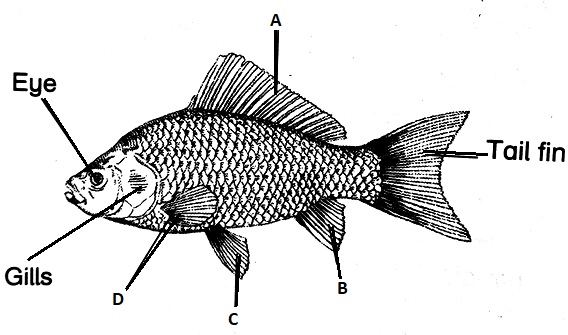
41. Name the fin labeled A . . . . . . . . . . . . . . . . . . . .
42. Fish use . . . . . . . . . . . . . . . . . . . . . for gaseous exchange (breathing).
Use the diagram of a monocotyledonous seed below to answer questions 43- 44.
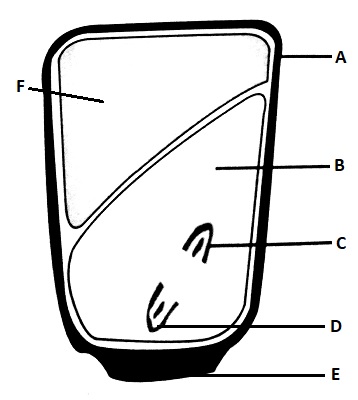
43. The part labeled A is called . . . . . . . . . . . . . . . . .
44. The part labeled D grows into . . . . . . . . . . . . . . .
45. The electronic device below is used in the modern way of communication. It is called . . . . . . . . . . . . . . . .

LEARNINGHUBTZ.CO.TZSCIENCE STANDARD FIVE EXAM SERIES 26
PRESIDENT'S OFFICE
REGIONAL ADMINISTRATION AND LOCAL GOVERNMENT
ANNUAL EXAMINATION
STANDARD FIVE
SCIENCE
TIME :1:30HRS
NAME_____________________________________SCHOOL_________________________
INSTRUCTIONS
- THIS paper consists of 50 questions
- Answer all questions
- Write full name on the blank space above together with the name of the school
- Ensure your work is neat and legible.
SECTION A.
Choose the answer of the most correct answer and write its letter on the spaces provided.
- The basic unit of life of all living organisms is
- Organ
- Cell
- Tissue
- System
- Putting food in the mouth and swallowing it is
- Egestion
- Digestion
- Ingestion
- Excreation
- Insects breath through
- Mouth
- Stomata
- Spiracles
- Gills
- in the magnet drawn, letter x represents
- north pole
- south pole
- west pole
- east pole.
- The enzyme that digests starch is………………………
- Pepsin
- Amylase
- Bile
- Rennin
- Which of the following is a mammal that can fly
- Bird
- Bat
- Mosquito
- Butterfly
- An animal that lays eggs in land but lives in water is
- Whale
- Tortoise
- Lizard
- Crab
- A mammal without sweat gland is
- Bat
- Whale
- Dog
- Rat
- A plant that produces seeds without flowers is called
- Orange
- Maize
- Mango
- Pineapple
- The process by which plants make their own food is called
- Chlorophil
- Transpiration
- Photosynthesis
- Expiration
- Plants make their food mainly through the use of
- Stem
- Leaves
- Roots
- Stomata
- Which is not a requirement for photosynthesis
- Light
- Water
- Carbon dioxide
- Oxygen
- The green colouring matter found in plants leaves is called
- Xanthophil
- Chloroplast
- Chlorophil
- Food
- Which gas does plants use at night?
- Oxygen
- Carbon dioxide
- Carbon monoxide
- Nitrogen
- Which of the following plants does not store its food on the roots
- Carrots
- Cassava
- Yams
- Sugar cane
- Plants transports water and mineral salts from the soil to the leaves using
- Roots
- Xylem
- Phloem
- Veins
- In plants, fertilization occurs in
- Ovules
- Stigma
- Ovary
- Style
- Which part of a flower is brightly coloured?
- Sepal
- Anther
- Petal
- Stigma
- The transfer of pollen grains from anthers to the stigma is called
- Pollution
- Fertilization
- Ovulation
- Pollination
- The male gametes of a plant are called
- Sperm
- Ovules
- Pollens
- Ovum
MATCH THE FOLLOWING ITEMS BY CHOOSING THE CORRECT ANSWER
| LIST A | LIST B |
|
|
WRITE TRUE FOR A TRUE STATEMENT AND FALSE FOR A FALSE STATEMENT
- All mammals have mammary glands……………………..
- The study of animals in relation to environment is called ecosystem
- A tortoise hides on his shell to escape from predators
- A chameleon changes color to appear beautiful….
- Plant loose water through the leaves………………
- A camel can stay in desert for 40 days without water
- A millipede coils to escape from danger
- Like poles of a magnet repels each other…………….
- All metals are magnetic………………
- A computer is more intelligent than a human being…………
Supply the correct answer for question 41-45
- An instrument used to measure body temperature is………………………………….
- When one sits near fire, he get heat through………………………………………………….
- What is health?............................................................................................
- The box that contains items for first aid is called………………………………….
- Mention two causes of meningitis………………………………………………………
Study the figure below and answer the questions that follow
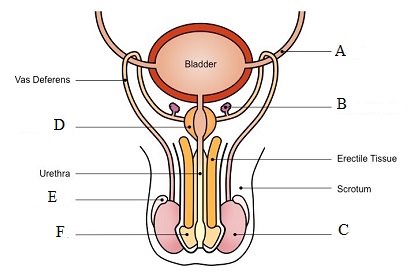
- The part labelled A is called………………………….
- In which part are the sperms formed………………………..
- Part F is called…………………………………………
- Name two functions of urethra………………………….
- Name part labelled E.
LEARNINGHUBTZ.CO.TZSCIENCE STANDARD FIVE EXAM SERIES 20
THE PRESIDENT’S OFFICE MINISTRY OF EDUCATION, LOCAL ADMINISTRATION AND LOCAL GOVERNMENT
SCIENCE- TERMINAL EXAMINATION-MAY
STD FIVE
TIME: 1.30 HRS 2020
NAME:____________________________________CLASS:___________
INSTRUCTIONS.
- This paper consists of 45 questions
- Answer all questions in the spaces provided
- Ensure clarity in all your answers
- Do not attempt to cheat.
SECTION A.
FOR QUESTIONS 1-20, CHOOSE THE CORRECT ANSWER FROM THE ALTERNATIVES GIVEN.
1. Which animal flies with wings having feathers
- Bird
- Bat
- Mosquito
- Butterfly
2. ………….lays eggs in water, though he lives in water
- Octopus
- Tortoise
- Crocodile
- Frog
3. ………..lives in water but lays her eggs on dryland
- Bat
- Tortoise
- Lizard
- Octopus
4. …………….produces seeds but does not have flowers
- Oranges
- Pineapples
- Maize
- Mango
5. ………….is a mammal but does not have sweat glands.
- Bat
- Whale
- Dog
- Rat
6. Which of these activities shows interdependence among organisms?
- Use of organic fertilizer on maize shamba
- Use of manure on maize farm
- Use of insectides on the farm
- Use of paper to make charcoal
7. The study of relationship between organisms and the environment is called
- Biology
- Ecology
- Agriculture
- Balance of nature
8. When plants make their own food, they help in;
- Adding carbondioxide gas into atmosphere
- Reduction of amount of oxygen in atmosphere
- Adding amount of oxygen in atmosphere
- Reduction of carbondioxide in the atmosphere.
9. Keeping large number of animals in a small piece of land can cause;
- Improves ecology
- Destroys ecology
- Removes vegetation and make an area attractive
- Helps us get food easily.
10. Ecologically, burning of forests……………
- Has negative effects to plats and animals
- Adds amount of animals in soil
- Is sustainable way of harvesting honey
- Has no effects on the environment.
11. Which part of cockroache’s body carries fertilized eggs?
- At the end of uterus
- In the stomach
- At the tail end
- In the gills
12. How many stages does a cockroach undergo to complete metarmophosis?
- four
- three
- two
- five
13. Which stage in growth of butterfly is the most destructive to the farmer?
- Pupa
- Lava
- Adult
- Egg
14. How many legs does a grasshopper have?
- Four
- Six
- Eight
- Two
15. Which part of reproductive system does implantation take place?
- Fallopian tube
- Uterus
- Cervix
- Ovary
16. In man, sperms are produced in the,
- Testis
- Epidydimis
- Scrotum
- Vas deferens
17. Which is not a characteristic of wind pollinated flowers
- Have nectar
- Dull coloured
- Produce many pollens
- The filaments are long and wavy
18. The part of a flower that receives pollen grains is called
- Anther
- Style
- Filament
- Stigma
19. Which of these are products of photosynthesis?
- Oxygen and carbon dioxide
- Water and glucose
- Oxygen and glucose
- Energy and water.
20. The role of chlorophily in plants is to;
- Give a plant good colour
- Trap water
- Trap sunlight
- Trap energy
SECTION B. WRITE TRUE OF FALSE FOR EACH OF THE FOLLOWING STATEMENTS.
21. Animals like birds are only organisms which are cold blooded…………
22. If the nostril of a frog is closed, it dies…………………
23. Human beings and rat are in the same group……………
24. Crocodile is a mammal……………………………
25. Bat is a bird because he can fly………………… .
26. All birds have feathers……………… .
27. There are species of frogs which gives birth to live young ones………………….
28. All mammals lives on dry land……………………
29. Amphibians and reptiles have warm blood………… .
30. Worms and mosquitoes do not have a backbone……………
SECTION C.
MATCH THE ITEMS IN LIST A WITH THOSE IN LIST B TO GET MEANINGFUL SENTENCE.
| LIST A | LIST B |
| 31. Cockroach 32. Fish 33. Dog 34. bird 35. pineapple 36. poikilothermia 37. snake 38. amphibian 39. monocotyledon 40. dicotyledon. |
|
SECTION D.
ANSWER THE FOLLOWING QUESTIONS BRIEFLY.
The diagram below shows fertilization in flowering plant. Use it to answer questions that follows.
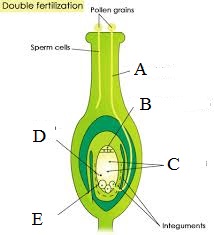
41. Name parts A, B,C,D and E.
42. What is formed when the above process is complete.
43. What is pollination?
44. Name two types of pollination
45. Name two organisms that undergoes complete metamorphosis
46. The process by which a fruit is formed without fertilization is called……… …………
LEARNINGHUBTZ.CO.TZSCIENCE STANDARD FIVE EXAM SERIES 12
PRESIDENT’S OFFICE MINISTRY OF EDUCATION, REGIONAL ADMINISTRATION AND LOCAL GOVERNMENT
STANDARD FOUR MID TERM EXAMINATIONS- APRIL 2020
TIME : 2:30 HOURS
SCIENCE
INSTRUCTIONS
- This Examinations Consists Of 50 Questions
- Answer All Questions
- Write Your Answers In Capital Letters
- Make Your Work Legible
SECTION A.
Choose the correct answer from the Alternatives given
1. The intention of the insecta to shift from one flower to another is;
- To reproduce flowers

- To escape enemies
- To find honey

- To spread seeds

- To find smell
2 . In order a seed to germinate it needs the following things:
- Water, soil and air
- Rain, air and soil
- Moisture, soil and heat
- Water, air and heat
- Water, light and wind.
3. Which insect below cause a lot of destruction to the farmer during the second stage of metamorphosis?
- Housefly
- Butterfly
- Grasshopper
- Tsetse fly
- Mosquito
4. Seeds of a plant store food at the;
- roots
- leaves
- stem
- cotyledon
- fruit
5. Which of the diseases below is transmitted by cockroach?
- Small pox
- Diarhoea
- epilepsy
- kwashiokor
- Typhoid fever
6. How many stages are there in the growth of a cockroach?
- Two
- Three
- Four
- Five
- Six.
7. Which of the following does not have vertebral column?
- Spider
- Bat
- Cat
- Man
- Chicken.
8. In the normal procedure, the first stage to be followed when conducting a
scientific experiment is
- to start an experiment
- data collection
- problem identification
- data analysis
- interpretation of results.
9. The third stage in a scientific experiment is
- data analysis
- interpretation of results
- preparation and starting the experiment
- data collection
- problem identification.
10. Which of the following groups represent characteristics of living organisms?
- Dying, feeding and seeing
- Dying, reproducing and
 changing colour
changing colour - To respire, to respond and hearing
- To respire, to reproduce and to walk
- To move, to respire
 reproduce
reproduce
11. Which of the following groups are the characteristics used to identify animals that belong to reptiles?
- Laying eggs, cold blood living in water
- Laying eggs, living in water and terrestrial life
- laying eggs, warm blood and terrestrial life
- laying eggs, cold blood and respire by using fins
- laying eggs, respire using skin and living in water.
12. The absence of chlorophyll in a plant may lead to;
- lack of iodine in plants
- failure of plants to synthesize food
- drying of the plant leaves
- plant leaves becoming yellow
- shading off the plant leaves.
13. The female part of a flower which is responsible for reproduction
- stamen
- style
- ovary
- petal
- sepal
14. The difference between a fruit and a seed is.......
- a seed has a fruit
- a fruit can germinate
- fruit has two cotyledones
- seed can germinate
- seeds are not eaten
15. Which of the following is a classification of animals with back bone?
- Snails, lizard and monitor lizard
- Tick, grasshopper and tsetse fly
- Toad, crocodile and ants
- Hen, bat and duck
- Snake, grasshopper and goat.
16. Which part of the flower receives the male gametes?
- Stigma
- Style
- Testa
- Ovule
- Petal.
17. Which of the following living things use chlorophyll to manufacture their food?
- Insects
- Plants
- Animals
- Viruses
- Birds.
18.Animals which are adapted to living in water and terrestrial environment belong to a group of
- birds
- amphibians
- reptiles
- fish
- mammals.
19. Animals like crocodiles, hippopotamus and frogs live in what kind of habitat?
- In the sky and on the land
- On the land and in water
- Any kind of environment provided there is food
- On the land and in caves
- In the forests.
20. There are two types of plant seeds known as
- main cotyledon and minor cotyledon
- monocotyledon and dicotyledon
- dicotyledon and main stalk
- seeds with roots and seeds without roots
- natural seeds and wild seeds.
SECTION B.
Write True for a correct statement and False for untrue statement
- Only birds are cold blooded… … … … … … … … …
- Human beings and rat are in the same group… … … … … … … … … … … … … … .
- All mammals live on dry land… … … … … … … … … … … …
- A Bat is a bird because it can fly … … …… … … … … … … … ..
- All birds have feathers… … … … … … … … … … … … … … .
- A Crocodile is a mammal… … … … … … … … … … … … … …
- Female gametes are stored in the pistil… … …… … … … … … …
- The style receives pollen grains… … … … … … … … … … … .
- Maize plants undergo self pollination… … … … … … … … … ..
- Female gametes are stored in the scrotum… … … … … … … … ..
SECTION C
| LIST B | LIST B |
|
|
SECTION D
Fill the missing gaps with the best answer
- Animal that lays eggs and lives on land… … … … … … … … … … … … … … … … ..
- An animal that lives in water but lays eggs on dry land… … … … … … … … … … … … … … … … … … … … … … ..
- A plant that produces seeds but does not produce flowers… … … … … … … … … … … … … … … … … … … … … … … … …
- A frog uses… … … … … … ..for gaseous exchange
- Used for transportation of water and mineral salts from soil to leaves… … … … … … … .
- Part of a plant cell that contains chlorophyl… … … … … … … … … … … … … … … … … … … … … … ..
- Female part of a flower… … … … … … … … … … … … … … … … … … … … … … … … … … … … … … … … … … … … … … … … ..
- Joins a flower to the stem… … … … … … … … … … … … … … … … … … … … … … … … … … … … … … … … … … … … … … … … ..
- Change of insects from one stage to another is called?................................
- The outcome of fertilization of a flower is… … … … … … … … … … … … … … … … … … … … … … … … … … … … … … … … … … … .
LEARNINGHUBTZ.CO.TZSCIENCE STANDARD FIVE EXAM SERIES 6
Hub App
 For Call,Sms&WhatsApp: 255769929722 / 255754805256
For Call,Sms&WhatsApp: 255769929722 / 255754805256
 For Call,Sms&WhatsApp: 255769929722 / 255754805256
For Call,Sms&WhatsApp: 255769929722 / 255754805256







